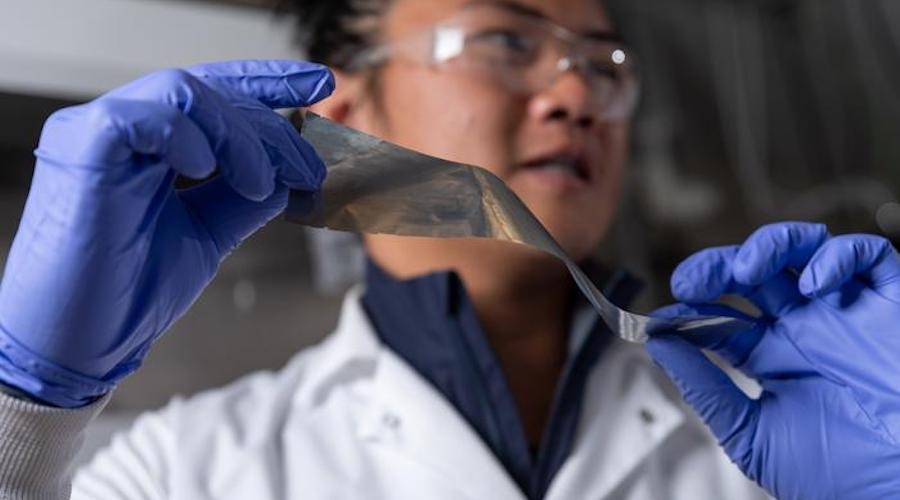A team of researchers from the Georgia Institute of Technology is using aluminum foil to create batteries with higher energy density and greater stability that may, one day, power next-generation long-range vehicles and electric aircraft.
In a paper published in the journal Nature Communications, the researchers explain that the new device could enable electric vehicles to run longer on a single charge and would be cheaper to manufacture — all while having a positive impact on the environment.
“We are always looking for batteries with higher energy density, which would enable electric vehicles to drive for longer distances on a charge,” lead researcher Matthew McDowell said in a media statement. “It’s interesting that we can use aluminum as a battery material because it’s cost-effective, highly recyclable, and easy to work with.”
According to McDowell, the idea of making batteries with aluminum isn’t new. Researchers investigated its potential in the 1970s, but it didn’t work well.
When used in a conventional lithium-ion battery, aluminum fractures and fails within a few charge-discharge cycles, due to expansion and contraction as lithium travels in and out of the material. Developers concluded that aluminum wasn’t a viable battery material, and the idea was largely abandoned.
In solid-state batteries, however, it is possible to integrate new high-performance active materials, without the risks present in Li-ion devices. Thus, the research team started looking at aluminum because they knew that it would have energy, cost, and manufacturing benefits when used as a material in the battery’s anode. Yet, pure aluminum foils were failing rapidly when tested in batteries.
The group decided that instead of using pure aluminum in the foils, they added small amounts of other materials to the aluminum to create foils with particular “microstructures.” They tested over 100 different materials to understand how they would behave in batteries.
“We needed to incorporate a material that would address aluminum’s fundamental issues as a battery anode,” Yuhgene Liu, first author of the paper, said. “Our new aluminum foil anode demonstrated markedly improved performance and stability when implemented in solid-state batteries, as opposed to conventional lithium-ion batteries.”
Outperforming Li-ion
The team observed that the aluminum anode could store more lithium than commonly used anode materials, and therefore more energy. In the end, they created high-energy-density batteries that could potentially outperform lithium-ion batteries.
“One of the benefits of our aluminum anode that we’re excited about is that it enables performance improvements, but it also can be very cost-effective,” McDowell said. “On top of that, when using a foil directly as a battery component, we actually remove a lot of the manufacturing steps that would normally be required to produce a battery material.”
McDowell pointed out that short-range electric aircraft are in development by several companies, but the limiting factor is batteries. Today’s batteries do not hold enough energy to power aircraft to fly distances greater than 150 miles or so. New battery chemistries are needed, and his team’s aluminum anode batteries could open the door to more powerful battery technologies.
“The initial success of these aluminum foil anodes presents a new direction for discovering other potential battery materials,” Liu said. “This hopefully opens pathways for reimagining a more energy-optimized and cost-effective battery cell architecture.”
The group is currently working to scale up the size of the batteries to understand how size influences aluminum’s behaviour. The group is also actively exploring other materials and microstructures to create very cheap foils for battery systems.


